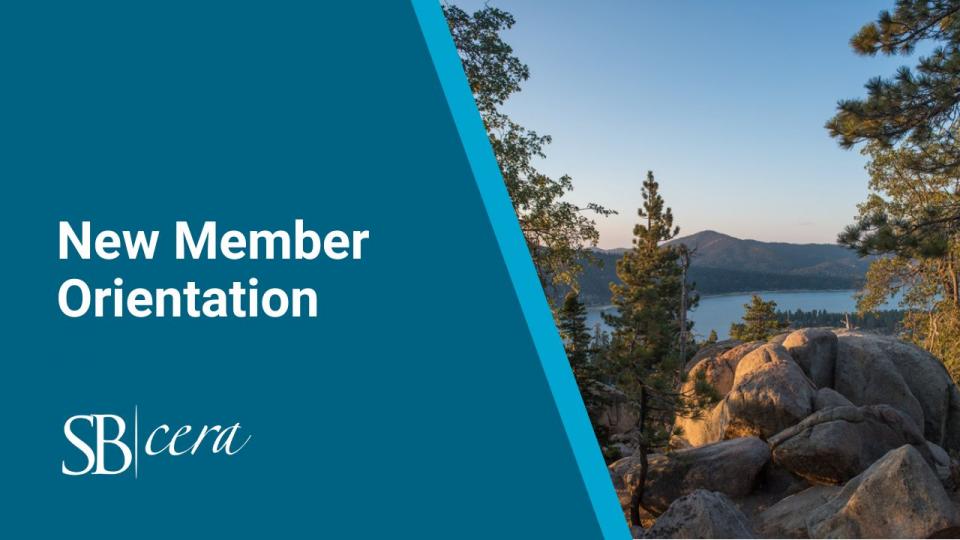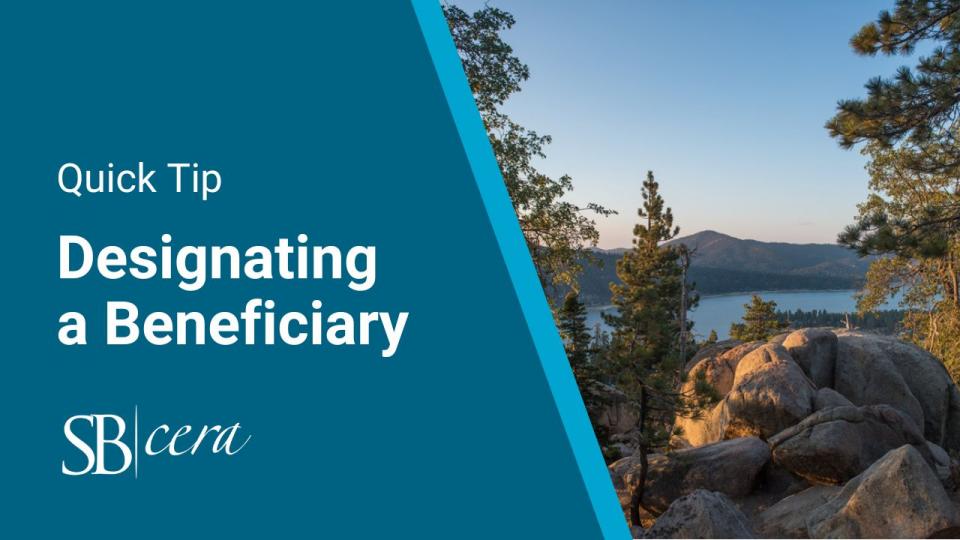Members
Welcome to SBCERA
The San Bernardino County Employees’ Retirement Association (SBCERA) is an independent, defined benefit pension plan providing retirement, disability, and death benefits on behalf of approximately 52,000 members and beneficiaries. We serve 17 employers throughout California and invest more than $16 billion in assets.
As a defined benefit pension plan, SBCERA provides eligible members with a lifetime retirement benefit based on their years of service, age at retirement, final average compensation, and benefit formula.
Your SBCERA pension serves as a stable, reliable source of income—both for those already enjoying retirement and those who will retire in the years to come.
Our website offers a comprehensive library of resources and information about your retirement plan. From this point forward, our goal is to provide you with the knowledge and tools you need to make informed decisions about your future retirement. You can expect to hear from us throughout your career.
We look forward to serving you throughout your journey to retirement.
Debby Cherney
Chief Executive Officer
Your Contributions
Contributions to the SBCERA pension fund are made by you and your employer. These contributions are held in trust by SBCERA and invested for the long-term.
Beneficiary Resources
A beneficiary is the person the member has named in writing to receive such benefits provided by SBCERA upon the member’s death. The Primary Beneficiary is the first-named person or persons who would receive these benefits from SBCERA. The Alternate Beneficiary is the person or persons who would receive these benefits from SBCERA if there are no living primary beneficiaries on the date of the member’s death.
If a member dies before retirement, the appropriate death benefit is paid to the beneficiary or beneficiaries the member designated when the member joined SBCERA or, subsequently, on an SBCERA Beneficiary Designation/Change form.
Planning Your Service Retirement
Choosing to retire is a big decision. Knowing when you are “ready” to retire versus when you “can” retire are often two different decisions. You may be ready to retire, but unsure whether it’s the right time or if you can afford it. Retirement requires careful consideration and planning. Below are some things you should consider when deciding to retire.
Life Events
Throughout your time as an active member of SBCERA use the list below to assist you in determining what steps to take should any of the following life events occur.
Death Benefits
If you die before you retire, there are various death benefit options available for your beneficiary or beneficiaries based on the type of beneficiary you have and how many years of service credit you have.
Disability Retirement
If you become permanently incapacitated while you are an active SBCERA member, you may be eligible for a Disability Retirement. Permanently incapacitated means you are physically or mentally incapacitated from performing the usual duties of your job.
Types of Disability Retirement
There are two types of Disability Retirements:
- Service-Connected
- Nonservice-Connected
The requirements and benefit impacts differ for each type. Read below for a summary of each type.
Other Retirement Options & Considerations
When planning for retirement, there are several options and considerations to keep in mind.
Deferred Members
Upon separation of employment with a participating SBCERA employer, you can choose to defer your retirement and go on deferred membership status if:






